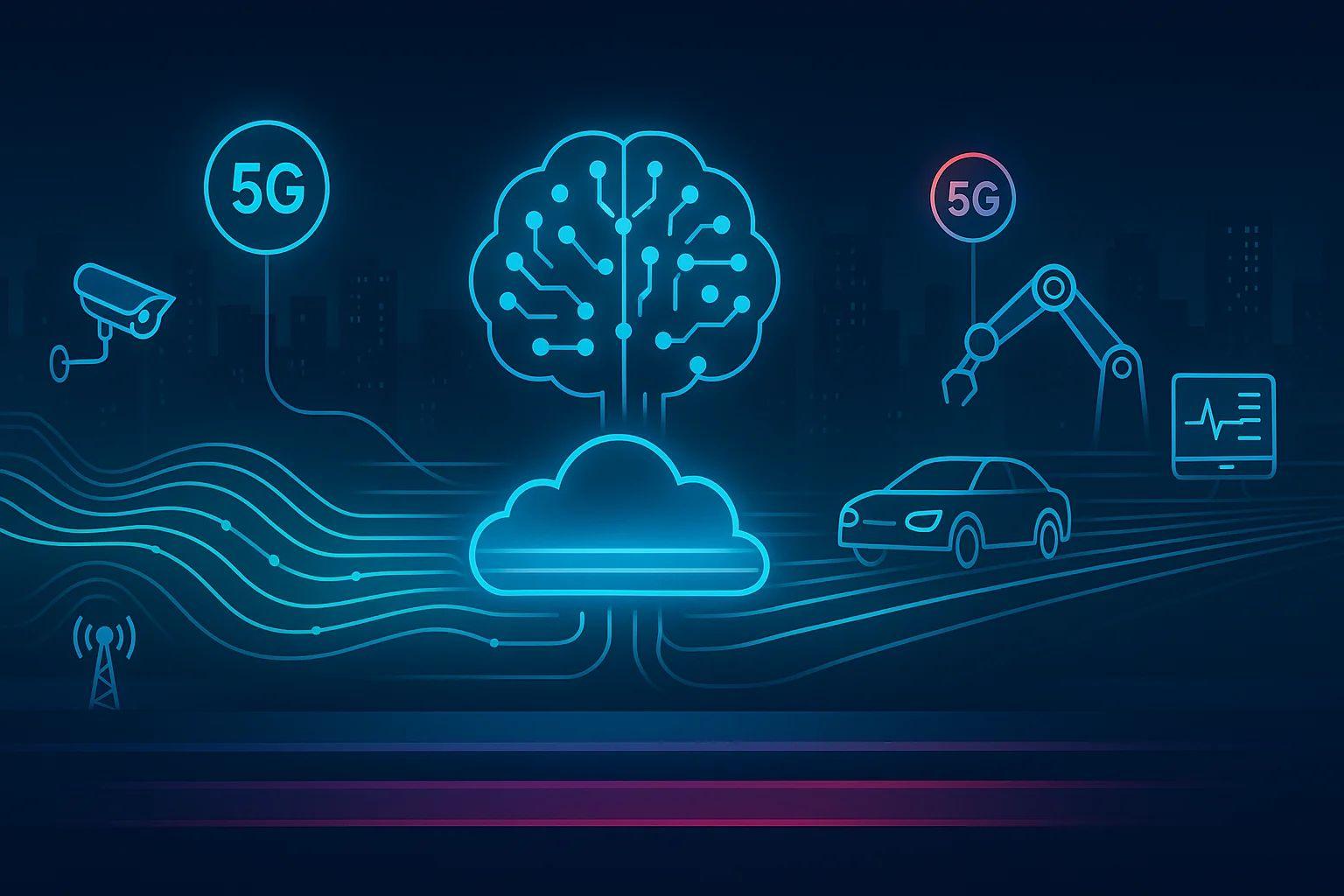Real-Time Innovation Through 5G, Edge Computing, and AI

The world stands on the brink of a technological transformation unlike anything before, driven by the convergence of 5G edge AI real-time systems. This powerful trio—5G networks, edge computing, and artificial intelligence—is reshaping the way data moves, decisions are made, and innovation unfolds. Where traditional systems once relied on distant cloud servers, this new model brings intelligence closer to the source of action, enabling unprecedented responsiveness and efficiency. The fusion of these technologies doesn’t just make things faster—it redefines what “instant” truly means in our increasingly connected digital era.
Understanding the Core of 5G Edge AI Real-Time Technology
To appreciate the impact of 5G edge AI real-time solutions, it’s essential to understand how each technology contributes to the ecosystem. 5G provides lightning-fast connectivity with minimal latency, capable of transmitting massive amounts of data almost instantaneously. Edge computing moves processing power closer to data sources, such as sensors, vehicles, or IoT devices, eliminating the lag caused by sending information back and forth to distant data centers. Artificial intelligence, meanwhile, gives these systems the ability to interpret data, make decisions, and act autonomously—all within milliseconds. Together, these elements form a digital nervous system where insights are generated and applied in the moment, creating true real-time intelligence.
Transforming Industries Through Real-Time Responsiveness
The combination of 5G edge AI real-time infrastructure is already revolutionizing industries across the globe. In healthcare, smart surgical robots and remote patient monitoring systems depend on instant data feedback, ensuring precision and safety during critical procedures. In manufacturing, edge AI analyzes sensor data from machinery in real time to predict maintenance needs, reducing downtime and boosting productivity. Transportation networks are also becoming more autonomous, with connected vehicles communicating instantly to avoid collisions and optimize traffic flow. Each of these examples demonstrates how real-time decision-making powered by edge intelligence and 5G connectivity is redefining the limits of efficiency and safety.
Enhancing Everyday Human Experiences
Beyond industrial applications, 5G edge AI real-time technology is transforming everyday human experiences in subtle yet profound ways. Consider the rise of smart cities where traffic lights adjust dynamically to reduce congestion, or augmented reality applications that respond instantly to user movements, offering seamless immersion. In entertainment, live sports broadcasts enhanced by AI-driven analytics deliver instant insights to viewers, while multiplayer gaming platforms achieve ultra-low latency, creating truly synchronized global play. The blend of 5G, edge, and AI is turning our devices from passive receivers into active participants in real-time experiences, shaping how we interact with the world around us.
The Role of Edge Intelligence in Real-Time Decision-Making
Edge intelligence lies at the heart of 5G edge AI real-time innovation. By processing data locally, closer to where it is generated, edge devices can analyze and act on information immediately without relying on distant servers. This decentralization allows for real-time adaptability in environments where every millisecond counts—such as autonomous drones navigating complex terrains or financial trading systems reacting to market fluctuations. The edge also enhances data privacy, as sensitive information doesn’t need to be transmitted to centralized data centers, giving businesses more control over their digital assets while maintaining responsiveness.
Driving Business Competitiveness and Efficiency
Enterprises that embrace 5G edge AI real-time strategies are gaining a significant competitive edge. Instant data analysis allows them to optimize operations, reduce costs, and create personalized customer experiences. Retailers can track in-store behavior in real time to adjust displays or promotions, while logistics companies use predictive analytics at the edge to route deliveries efficiently and manage fuel consumption. This integration empowers organizations to move from reactive to proactive decision-making, giving them the agility required to thrive in an increasingly data-driven marketplace.
The Synergy of 5G and Edge for Scalability
Scalability is another defining advantage of 5G edge AI real-time ecosystems. Traditional cloud infrastructures often struggle with the exponential data growth from billions of connected devices. By combining 5G’s high-speed bandwidth with distributed edge nodes, organizations can scale seamlessly without compromising on speed or reliability. As more devices join the Internet of Things, this scalable foundation ensures that real-time intelligence continues to expand smoothly across geographies and industries. Businesses can deploy AI-driven applications anywhere—from rural farming regions using smart sensors to urban centers managing traffic systems—with equal efficiency.
Challenges and the Road to Widespread Adoption
Despite the promise of 5G edge AI real-time technology, challenges remain before full global adoption. Infrastructure deployment costs are high, and ensuring interoperability between different vendors’ systems can be complex. Cybersecurity also demands attention, as the distributed nature of edge networks introduces new points of vulnerability. Additionally, managing the enormous flow of data while maintaining privacy and compliance will require advanced encryption and ethical AI frameworks. Overcoming these hurdles calls for collaboration among telecom operators, technology developers, and policymakers to establish standards that ensure safety and reliability without stifling innovation.
The Future of Real-Time Intelligence
The evolution of 5G edge AI real-time ecosystems marks the beginning of a new era where devices, networks, and humans operate in perfect synchronization. As these technologies mature, we will see the emergence of self-optimizing systems capable of learning from every interaction, continuously improving performance without human intervention. Imagine factories that adapt instantly to changes in demand, transportation networks that eliminate congestion autonomously, or cities that manage energy use dynamically to reduce waste. The future shaped by 5G, edge, and AI is one where intelligence becomes ambient—woven seamlessly into the fabric of daily life, enhancing efficiency, safety, and creativity at every level.
Conclusion: A Connected Future Powered by Real-Time Intelligence
The integration of 5G edge AI real-time technology represents far more than an incremental upgrade in connectivity—it’s the foundation of a smarter, faster, and more responsive digital world. By merging the speed of 5G, the proximity of edge computing, and the intelligence of AI, humanity is building systems capable of perceiving and responding to change in real time. This convergence will continue to accelerate innovation across every domain, from healthcare and manufacturing to entertainment and education. In the coming decade, those who harness this transformative synergy will lead the way into a connected future where real-time intelligence powers every aspect of progress.






